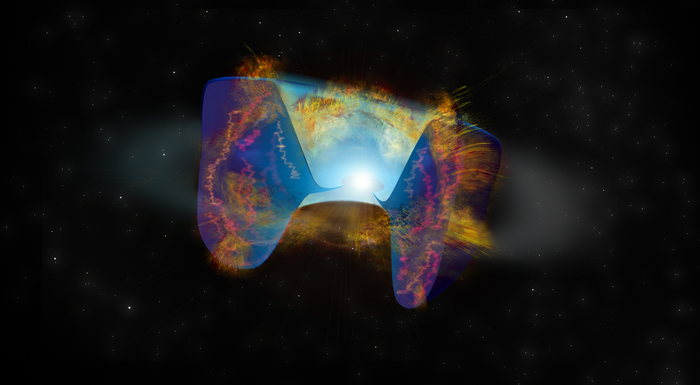
Survey data is often perfect for data mining, and many telescopes will spend years taking repeated measurements of large segments of the sky as they peer deep into the universe looking for both known and unknown objects. The Very Large Array in New Mexico, for instance, is currently working on a sky survey, VLASS, that revealed a previously only theoretical event: a small black hole or a neutron star dove into its companion star.
According to co-author Gregg Hallinan: Of all the things we thought we would discover with VLASS, this was not one of them.
This work appears in Science and was led by Dillon Dong.
This event was discovered as a bright radio source that hadn’t been apparent in earlier surveys. Follow-up observations with the Keck telescope determined the bright source was in the outskirts of a dwarf, star-forming galaxy 480 million light-years from Earth. While trying to sort out when this bright source originated, researchers discovered an X-ray burst was detected from this object’s direction back in 2014. Putting together all this information, they were able to build a fascinating story of just what is going on.
About 300 years ago, it appears that a black hole or neutron star entered the atmosphere of its companion. This caused the star to stream material into its surroundings, and that material forms an expanding ring around the now murdered star. As the black hole or neutron star spiraled toward its companion’s core, it gathered up the surrounding material, and in 2014, it disrupted that vulnerable star’s fusion-powered core. And what used to be a star and a parasitic compact invader exploded as a supernova.
Now before you ask “how do we know what something 480 million light-years away did 300 years ago”, I just want to clarify that when astronomers say “300 years ago” they mean “in the light arriving at Earth, we would have seen this thing that happened 300 years ago”. I don’t write the rules, folks; I just report the news.
More Information
NRAO press release
“A transient radio source consistent with a merger-triggered core collapse supernova,” D. Z. Dong et al., 2021 September 3, Science




 Join the Crew!
Join the Crew!
 Escape Velocity Space News
Escape Velocity Space News
0 Comments